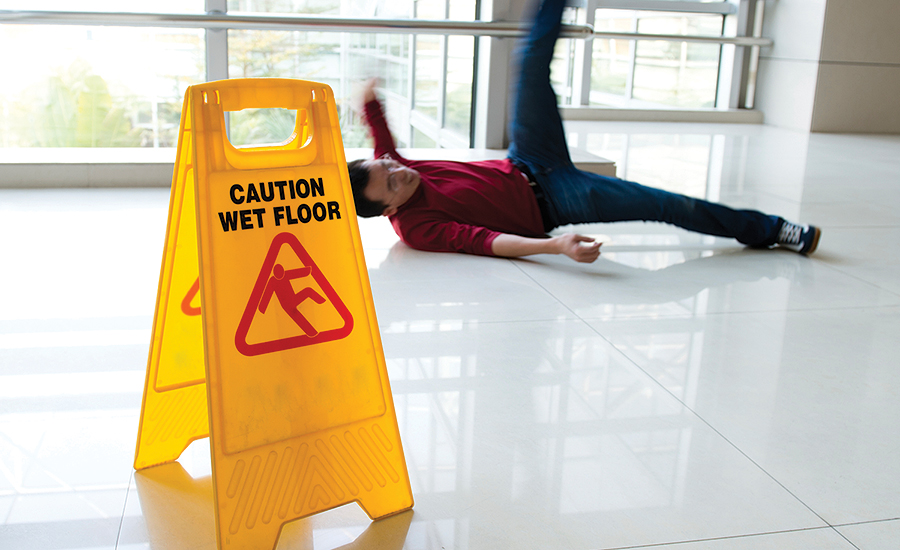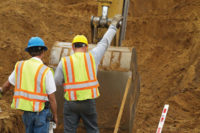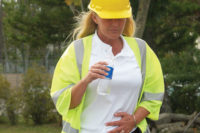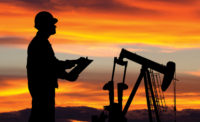It’s no secret that slips, trips and falls are a leading cause of workplace injury as well as increased insurance costs and regulatory citations; according to OSHA, slips, trips and falls constitute the majority of general industry accidents and are second only to motor vehicles as a cause of fatalities.
In fact, OSHA inspections find an average of 3.1 violations per location with 81 percent of these violations in categories that result in higher fines. And with the average penalty per serious violation costing around $2,000, establishing detailed slips, trips and falls procedures is critical. Here are the top four areas that need attention:
Housekeeping
A good housekeeping program is all about routine; workdays get busy, making it easier to unintentionally create a hazard for others, so keeping the workplace clean and well-organized should be an ongoing part of every employee’s daily job tasks. Your housekeeping program should identify and assign responsibilities for the following:
- Clean up during the shift
- Day-to-day cleanup
- Waste disposal
- Removal of unused materials
- Inspection to ensure cleanup is complete
Walking safely
No matter what type of job you have, if you spend any time standing or walking, you’re at some risk of a fall due to slipping or tripping. That makes walking safely an important part of every worker’s best safety practices. The following fall prevention considerations may seem like basic common sense, but too often, people let their guard down and that can lead to injuries.
Reduce wet or slippery surfaces. Several types of surfaces for both indoor and outdoor settings have areas where injuries have occurred. Weather conditions can greatly impact not only outdoor surface traction, but indoor as well, as moisture can be tracked in by pedestrian traffic.
- Ensure parking lots and sidewalks are clean and in good condition
- Remove or treat snow and/or ice when present
- Use adhesive striping material or anti-skid paint or tape whenever possible
- Use moisture-absorbent mats with beveled edges and non-slide backing material in entrance areas
- Use “Wet Floor” signs when needed
- Clean up spills immediately
- Use proper area rugs or mats for food preparation areas
- Watch out for obstacles in aisles and walkways—clutter, materials and equipment are typical culprits in workplace injuries.
- Keep all work areas, passageways, storerooms and service areas clean and orderly
- Avoid stringing cords, cables or air hoses across any designated aisle
Footwear
Shoes can play a big part in preventing falls—in fact, whenever a fall-related injury is investigated, the footwear needs to be evaluated as well to see if it contributed to the incident. When choosing the correct footwear consider:
- Slip-resistance– Slip-resistant footwear is specifically designed to provide good traction; shoes are typically covered with soft rubber cleats and have little or no heel to maximize the amount of shoe-to-floor contact.
- Protection – In addition to slip, trip and fall protection, work shoes should also protect against other hazards, such as heavy or sharp objects, corrosive chemicals or exposure to electricity.
- Comfort – Poorly fitting footwear leads to fatigue and increases the possibility of an accidental fall
Elevated falls
Falls from an elevation can be severe and are among the most common serious work-related injuries and deaths. OSHA requires that fall protection be provided at elevations of four feet in general industry workplaces, five feet in shipyards, six feet in the construction industry, and eight feet in long-shoring operations. To prevent employees from being injured from falls, OSHA says employers must:
- Guard every floor hole into which a worker can accidentally walk using a railing and toe-board or a floor hole cover
- Provide a guard rail and toe-board around every elevated open sided platform, floor or runway
- Regardless of height, if a worker can fall into or onto dangerous machines or equipment (such as a vat or acid or a conveyor belt) employers must provide guardrails and toe-boards to prevent workers from falling and getting injured
- Other means of fall protection that may be required on certain jobs include safety and harness and line, safety nets, stair railings and hand rails
Stay alert, stay slip-free
It is human nature to let our guard down for a moment and be. In addition to workplace hazards, taking shortcuts, not watching where one is going, using a cell phone, carrying materials that obstruct vision, not using designated walkways, and speed all increase the chances of a slip, trip, or fall. It’s ultimately up to each individual to plan, stay alert, and pay attention.




